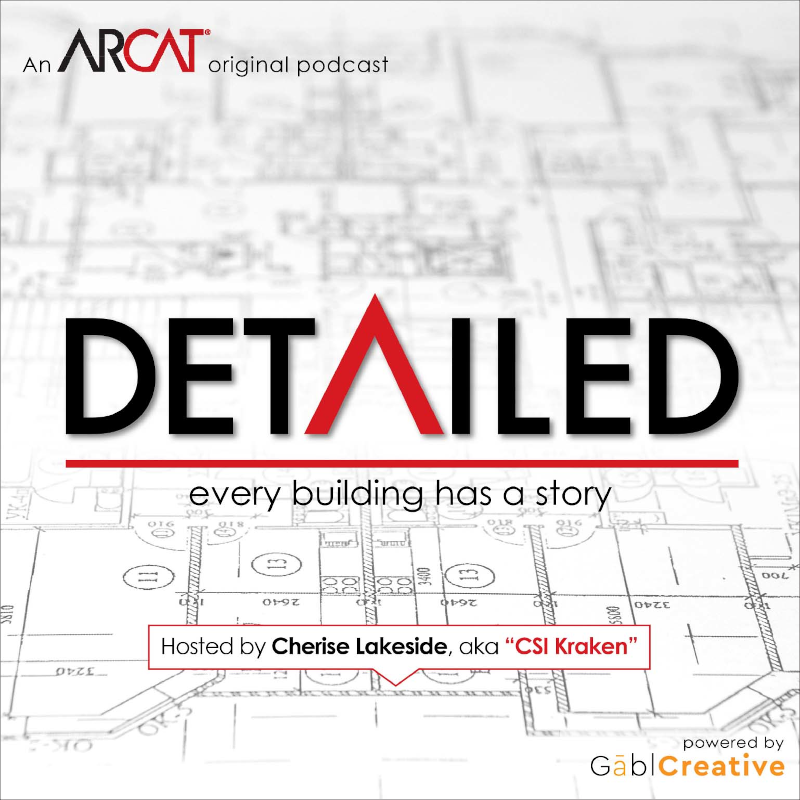|
Contributed by Michael Chambers I recently had the opportunity to discuss specification marketing strategies with a former publisher of a national architecture magazine. I mentioned that a very powerful strategy was to ensure that the appropriate competitors are named in manufacturers guide specifications. A look of abject horror greeted that remark which, of course, caused me to launch into a primer on specification marketing to design professionals.
Additionally, there has been a significant discussion on 4Specs.com about what specifiers want in manufacturers guide specifications. Interestingly, naming appropriate competitors was mentioned numerous times. Specification marketing is second only to continuing education presentations as the most effective branding and marketing tool for construction product manufacturers. A product representative must be a good educator and highly knowledgeable about specifications to be truly effective with design professionals. Competitive Advantage While the industry understands competitive advantage in terms of faster, better, or cheaper, a product representative's competitive advantage lies in the following 3 critical elements:
Limitations It is critical for specifiers and designers to understand how not to use or apply a product or system. This may seem a bit counter-intuitive but it is not. Many, if not most, product failures begin with the designers and specifiers not understanding how to appropriately use and apply a product or system. More than anything else help specifiers avoid mistakes. Competitive Products Every competent manufacturer and product representative intimately knows and understands who the competition is and how their products and systems stack up. Share that information with designers and specifiers and instantly you become the go-to expert and resource. Sole source specifications are a powerful magnet for substitutions. Make certain that specifiers and designers clearly understand why you are suggesting competitive products and why you consider them equivalent. Remember, there is no such thing as “equal” products, just equivalent. Offering specifiers a list of equivalent products allows product representatives to level the playing field and narrow the competitive arena. Be careful to ensure that appropriate competitors are named or your reputation may be damaged. Solutions NOT Products The final, and arguably, most important element of competitive advantage is the product representative=s relationship with designers and specifiers. Provide solutions not products. Sell yourself, your expertise, your industry knowledge not your products. Specification Review Whenever possible, request a copy of the specification and offer to review and comment on project specific information. Any specifier worth their salt will provide project specifications for review. This is a significant opportunity to expand relationship, build credibility, and find out what the specifiers knows about your product. In the final analysis, what a manufacturer may reasonably expect from a specifier is a well-crafted specification that lists the appropriate competitors. Who better to help the specifier accomplish that task that a knowledgeable product representative? Protect your competitive advantage by supporting specifiers in producing complete specifications that contain appropriate requirements and truly equivalent manufacturers and products. (Editor's Note: Michael D. Chambers, FCSI, FAIA, CCS is Associate Vice President and Senior Project Specifier for HGA and is responsible for the specifications in the four California offices and is principal of MCA Specifications. Michael also sits on the CONSTRUCT Education Advisory Council with Let's Fix Construction Co-Founders, Cherise Lakeside and Eric D. Lussier. NEW FOR CONSTRUCT IN 2019! The NEW Product Rep University Program has been designed to meet the needs of Manufacturer's Representatives of Architectural Building Products, as integral members of the project team. The program features a full day of education (6 sessions) to help you stay up to date on current trends in the industry, and refine your interactions and relationships with design professionals. Get additional details on the Product Rep University here: https://www.constructshow.com/en/education/ProductRepUniversity.html CONSTRUCT will be held October 9 - 11, 2019 at the Gaylord National Resort & Convention Center in National Harbor, MD. Details and registration will be opening soon. Read more on CONSTRUCT here. )
0 Comments
Contributed by Mike Lapre When surety companies are asked to provide bonding for individuals or companies, the level of credit which is involved can generally be determined by a fairly universal formula which is observed by the surety industry. That formula is based on what is known as the three C's, and these are factors which will serve as a strong guideline for determining just how much credit can safely be extended to any bonding applicant. Those three C's are described below, so that if you have a fairly clear idea of how your company rates in each of these three areas, you should also have a fairly clear idea of just what level of credit you're eligible for.
Character Any underwriter who is trying to evaluate an applicant's character will take into account their personal credit history, their business credit history, their track record for paying bills, reputation in the community, any public liens or judgments, and their management experience. Any of these areas which are found to be weak or questionable will definitely have an impact on the underwriter's decision, although it probably would not disqualify an individual from becoming bonded. There are also ways in which you can improve on these areas, so that you're more likely to be bonded for the amount you want. Obviously one of these areas is to make sure that you pay your bills on time consistently, and that you catch up on any outstanding old bills you may have. It's a good idea to have lines of credit available to you, but it would be better if they are not used often. It's always good to keep an updated resume on hand, in case it's needed for consultation by a bonding agent. You should be able to explain any negative lines or mistakes on your credit history, or any past-due items which appear there, whether or not you caused them. You should always be as honest as possible with your bonding agent, and consult with them whenever there are any major financial events which have occurred to your business. By being forthright on all these issues, you'll have a much better chance of achieving the level of bonding that you are hoping for. Contributed by Eric D. Lussier It is difficult the morning after the tragic fire at Cathédrale Notre-Dame de Paris to NOT write about it. Like any noteworthy event in the modern day, news does spread on social media, pardon the pun, like wildfire. In what seemed like only moments, not only did the centuries old world landmark engulf, but so did my social medium of choice, Twitter.
As my feed was taken over in an instant, it did make me reflect, like many others, about what was occurring before our eyes. While never finding myself a religious person, nor a churchgoer, I did have the opportunity to visit Cathédrale Notre-Dame de Paris in February of 2017. If you have had the opportunity to visit, you may relate that in just a few moments you were overtaken with awe of a man-made structure. Without modern day technologies, this amazing structure had incredible detail, art and artifacts, both inside and out. If you took the time to walk through this magnificent example of construction, in one-tenth a nanosecond, your breath was taken away. I'm not an architecture critic, nor do I pretend to play one on TV. I'm not going into the technical terms nor rehashing words that have already been said or written. If anything, for at least one fleeting day, more attention will be paid to a structure that was taken for granted by many. Ironically, this coming week is National Architecture Week. And while this celebration is about architecture and the ways architects positively impact our lives, yesterday's events are a reminder that our world's history can be undone in one moment. By one Act of God. By one act of terrorism. By one little accident. Take a moment to look up. To appreciate. To reflect. Contributed by Eric D. Lussier I'm knee deep in a project right now that I'll call it what it really is: bailing the Owner out. Know what you get when you don't create bidding documents and rely solely on a low price? You get what you get. And if I say that phrase aloud in front of my 5 and 8-year-old, they add "and you don't pitch a fit".
Well, when one doesn't create an RFP, not to mention any sort of construction specification or drawing, how can one hold any level of expectation about their finished product? This Owner bought off a non-descriptive proposal and carried what matters most in the construction industry too much of the time: the lowest price. I don't have the time, the space, nor the want, to fully go down the road of the low-bid scenario. I will call it as I see it as a subcontractor: it's the short end of the stick. And yet it is still the "solution" for the most popular project delivery method in the construction industry today: design-bid-build. Let us Cliffs Notes design-bid-build within a tweet's 280-character limit: Owner has vision. Owner works with architect on design for vision. Architect develops schematics. Fine tunes. Vision formalized. Architect develops formal drawings & specifications for GC. Duration? Years? GC gets days to decipher vision. End result? Be cheapest. But that's simplifying things, you say. Sure, that may be. But in a nutshell, that's the process. One of the frustrating things about working with designers and developing specifications is becoming the basis of design, or an approved equal, only to be just breaking the sweat of the marathon race. Once you're named in a spec, you now must win the spec. And how do you ultimately win the spec? Match it and be the cheapest and ultimately, hope. Hope? Sure. Hope your price lands in the lap of the estimator in time. Hope they have time to read it. Hope they pick up what you're putting down. Hope they want to work with you. Hope you meet their qualifications to work together. Hope you can meet your estimate and make goal profit margin. Hope it all goes to plan. Hope you get paid in full in a timely fashion. Contributed by Michael Chambers Recently, a national trade association contacted education presenters to provide them with the evaluation results for their programs. This is a large association with a very strong focus on technology and its applications in business, education, worship, and industry. Their national convention offers hundreds of hours of educational opportunities for the attendees.
In general the education programs were very well received and evaluated. Attendees rated 90% of the programs at 4 (out of 5) or above for “overall quality and interest”. However, it is interesting to note that the same attendees indicated that less than 10% of the programs were rated 4 or above for “applicability to daily practice”. In other words, attendees thought the programs were very interesting but came away with nothing they could use in day-to-day practice. In my experience this is true of most of the continuing education that I receive from product manufacturers’ box lunches, AIA continuing education programs, and CSI Chapter presentations. The majority of them are interesting and provide USEFUL information but rarely do they ever provide USABLE information. The concept here is much like searching the web on Google™ or Yahoo™, you end up with hundreds of USEFUL items but only a tiny fraction are truly USABLE. If continuing education is to have a positive impact on the construction industry, developers and presenters are going to have to put real, applicable content into the programs. To effectively use continuing education as a marketing and communication tool, the content presented must be directly applicable to the day-to-day operations of the audience. Information about a product’s features and benefits is quite useful, as marketing hype, but it is rarely usable since design professionals need industry information, technical data, design guidelines, and details to effectively integrate a product or system into a building project. In any type of presentation to design professionals, the focus must be on providing USABLE rather than USEFUL information. I guaranty it will transform your relationships with design professionals and enhance your professional credibility. It is critical to provide continuing education information on how to specify the product and to provide examples and details of how to appropriately incorporate the product into the drawings. I am constantly amazed how few educational presentations even discuss specifying and even less, how to detail and coordinate the drawings. The best and most effective presentations are extremely simple, no PowerPoint™ or flim flam, just product installation examples, guide specifications, and example construction drawings of successful installations. That is truly USABLE information and HIGHLY EFFECTIVE continuing education. (Editor's Note: Michael D. Chambers, FCSI, FAIA, CCS is Associate Vice President and Senior Project Specifier for HGA and is responsible for the specifications in the four California offices and is principal of MCA Specifications. Michael also sits on the CONSTRUCT Education Advisory Council with Let's Fix Construction Co-Founders, Cherise Lakeside and Eric D. Lussier. NEW FOR CONSTRUCT IN 2019! The NEW Product Rep University Program has been designed to meet the needs of Manufacturer's Representatives of Architectural Building Products, as integral members of the project team. The program features a full day of education (6 sessions) to help you stay up to date on current trends in the industry, and refine your interactions and relationships with design professionals. Get additional details on the Product Rep University here: www.constructshow.com/PRU Download a Product Rep University flyer here. CONSTRUCT will be held October 9 - 11, 2019 at the Gaylord National Resort & Convention Center in National Harbor, MD. Read more on CONSTRUCT here. ) |
AboutLet's Fix Construction is an avenue to offer creative solutions, separate myths from facts and erase misconceptions about the architecture, engineering and construction (AEC) industry. Check out Cherise's latest podcast
Get blog post notifications hereArchives
March 2022
Categories
All
|






 RSS Feed
RSS Feed
